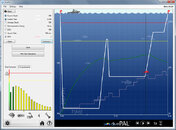Finneli Felwitch
Registered
I take a scuba trip with my family every year, we usually dive the same shore location every time and we follow the same routine every dive. Recently I have been reviewing the dive tables and I am a bit confused as to how I should determine the appropriate surface interval between dives.
Besides using the dive tables, I have an oceanic data plus computer and an Aries Manta computer.
For our routine dive, we stay between 55-60 feet and swim against the current. My father uses up gas faster than the rest of us and so we always turn around when he reaches 1500 psi. Upon turning around, we ascend to 35-30 feet and ride the current back. We take our 3-5 minute safety stop at 15 feet.
We usually eat lunch during the surface interval and always make sure to stay up for 1 hour and 30 minutes or more.
On the second dive, our max depth is at 45-50 feet and again when turning around, we ascend to 35-30 feet, ending with the 3-5 minute safety stop.
Each dive lasts 45-50 minutes (dive watch starts to record the time at 5 feet and ends at 3 feet).
Is there a way to determine the surface interval when you change depth like my family does?
Besides using the dive tables, I have an oceanic data plus computer and an Aries Manta computer.
For our routine dive, we stay between 55-60 feet and swim against the current. My father uses up gas faster than the rest of us and so we always turn around when he reaches 1500 psi. Upon turning around, we ascend to 35-30 feet and ride the current back. We take our 3-5 minute safety stop at 15 feet.
We usually eat lunch during the surface interval and always make sure to stay up for 1 hour and 30 minutes or more.
On the second dive, our max depth is at 45-50 feet and again when turning around, we ascend to 35-30 feet, ending with the 3-5 minute safety stop.
Each dive lasts 45-50 minutes (dive watch starts to record the time at 5 feet and ends at 3 feet).
Is there a way to determine the surface interval when you change depth like my family does?





